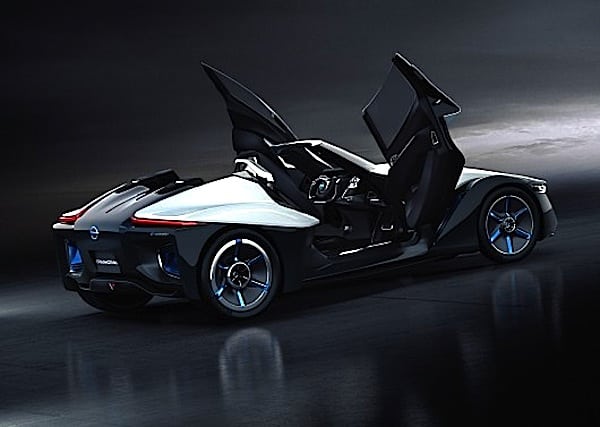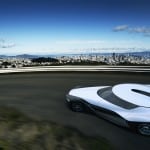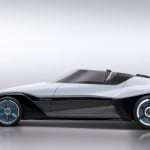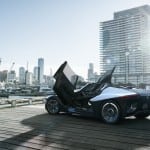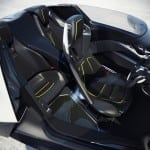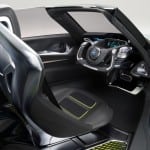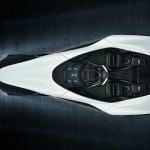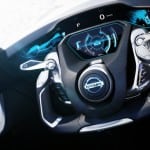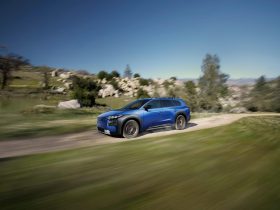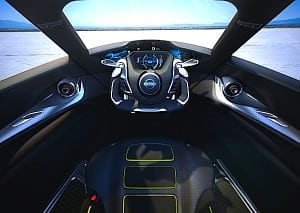
Nissan has weathered the 2008 global financial storm well, all things considered. It managed to introduce an electric car early in the reshuffling game and now is working on a Deltawing racing concept.
The idea behind the Deltawing is nothing short of genius. Very much a Colin Chapman spiritual descendent, the lighter Deltawing throws away any contemporary notions of rectangular wheel alignment with a radically different trapezoid setup. Two regular wheels in the back with two smaller ones in the front, with a closer track then the back makes this technical marvel able to keep up with cars twice as powerful in races.
The secret behind the Deltawing is a reduced front track, which allows for less front air resistance and weight. With less mass, it is able to corner much faster than a regular car would, with much less power, weight and resistance. This fact alone makes the Deltawing a potentially highly disruptive design force, which could shape the way we design race cars in the future. By consuming half as much gasoline, the Deltawing weighs half as less than a race car, its odd wheel alignment and half its power allows it to keep up with other race cars producing twice as much. Nissan is testing the design further as a hybrid with its ZEOD RC, which allows for an electric motor boost. We feel it won’t take too long before we see a DOT Nismo Deltawing available. After all, Nissan has graced us with great cars in the past, 300, 350 and all within the same price bracket, including the Godzilla in the room, the GT-R, the affordable Porsche eaters.
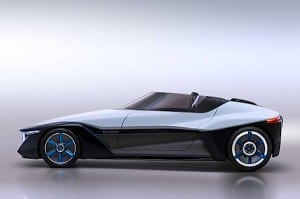
Delta BladeGlider, Race and Every Day Driving.
The project, led by Francois Bancon, division general manager of Product Strategy and Product Planning at Nissan reveals the real advantage is not only obviously on the track, but for commercial every day use. Nissan’s BladeGlider, based on the Deltawing experience learned from racing and its electric Leaf lead it has, could turn this highly intriguing concept into a more mundane every day car. So why exactly does the Deltawing, and now Nissan’s BladeGlider make sense as an electric car? Because its basic design allows for an intelligent layout of the battery pack, plus a unique, although already used driver and passenger layout. The driver seats in the front, while the passengers are slightly behind, to each side.
The BladeGlider Makes EV Sense.
Where the BladeGlider makes even more sense is as an electric vehicle, (EV) with its ideal trapezoid chassis. The shape makes it perfect to ideally place the battery pack where it makes most sense for weight distribution. The BladeGlider will sport in-wheel electric motors. While it moves away from the original 50-50 weight distribution, it achieves a 30-70 weight ratio.
It’s overall lighter weight, smaller front tires would be a serious performance advantage for today’s car. That performance gain, including newer available light and strong automobile materials becoming available, such as carbon fiber means we can lower a car’s weight while increasing its electric range, as long as we can build it in an affordable way.
See also: Deltawing Available For Purchase, and The ZEOD RC Ready in Japan.
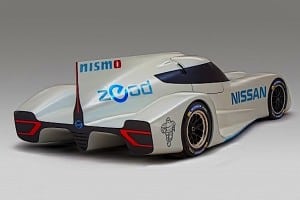
Concept or Reality?
Nissan seems to hint at a production and considering the radical shape of the car, we can expect it to look similar to the Tokyo Auto Show concept presented. If Nissan decides to go ahead with its BladeGlider, it places itself squarely in a position to yet again make a striking contribution in the history of the automobile industry.
Although, the BladeGlider shown is just a concept, and now with Nissan hinting at production, another fact to keep in mind is that the company is testing its ZEOD RC hybrid racer. Why not expect some a plug in hybrid (PHEV) variant in the BladeGlider? Make mine electric with a 150 mile range at around $40,000. In the meantime, if Nissan plays its cards well, it could introduce one of the biggest shifts in the automobile industry since its beginning with its BladeGlider.


